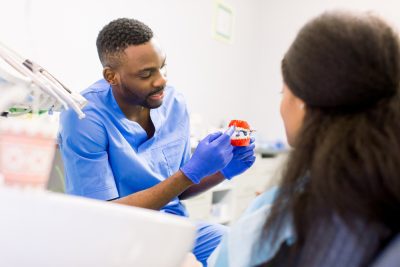In a groundbreaking revelation about women’s health, medical experts have uncovered alarming statistics about uterine fibroids in African American women. While these benign tumors affect many women across all demographics, their impact on Black women is particularly severe, with up to 80 percent of African American women developing fibroids during their childbearing years.
The revolutionary discovery changing lives
Dr. John Lipman, a pioneering figure in fibroid treatment, has transformed the landscape of women’s healthcare through his innovative approach to treating these debilitating tumors. His groundbreaking work with uterine fibroid embolization (UFE) began with an unexpected discovery in France, where medical professionals noticed a surprising pattern of symptom relief in patients.
Understanding the invisible battle
Uterine fibroids, while benign, can cause devastating symptoms that significantly impact daily life. These firm, rock-like growths within the uterus can create a cascade of health issues that many women struggle with silently. The location of these growths determines their impact, from excessive menstrual bleeding when found in the uterine lining to frequent urination when near the bladder. When growing on the sides of the uterus, these tumors can trigger intense pelvic pain, while multiple fibroids often lead to severe anemia and fatigue.
The genetic connection
Research has revealed two primary factors behind the high prevalence of fibroids in African American women. First, there’s a strong genetic component, with certain families showing a higher predisposition to developing these tumors. Scientists have identified the specific chromosome involved, though more research is needed to pinpoint the exact gene responsible.
The role of body composition
The second crucial factor involves body composition and its relationship with estrogen production. Since estrogen stimulates fibroid growth, higher levels of body fat can contribute to their development and expansion. This connection helps explain why fibroids typically grow during pregnancy and naturally decrease after menopause.
Revolutionary treatment approaches
Traditional treatments for fibroids often involved invasive surgeries, but Dr. Lipman’s work with UFE has opened new doors for women seeking relief. This innovative procedure works by cutting off the blood supply to fibroids, effectively shrinking them and eliminating symptoms without the need for major surgery.
The path to diagnosis and treatment
For many women, the journey to diagnosis begins with recognizing common symptoms. These can include unusually heavy menstrual periods, severe pelvic pain, frequent urination, chronic fatigue, and anemia. Early recognition of these signs can lead to more effective treatment outcomes.
Breaking barriers in healthcare
As medical director and director of interventional radiology at Emory-Adventist Hospital, Dr. Lipman has performed over 3,000 fibroid embolizations, making his practice the largest in the country. His work has not only advanced treatment options but also raised awareness about this condition that disproportionately affects African American women.
Looking toward the future
The medical community continues to research potential preventive measures, including the possibility of developing a vaccine. Understanding the genetic components of fibroids could lead to breakthrough treatments and better prediction methods for at-risk populations.
Hope for tomorrow
While the high prevalence of fibroids among African American women remains a serious concern, innovative treatments like UFE offer new hope. As awareness grows and treatment options expand, more women can access the care they need to overcome this challenging condition.
Taking action
Understanding risk factors and recognizing symptoms early can make a significant difference in treatment outcomes. Women experiencing potential fibroid symptoms are encouraged to seek medical evaluation, especially given the availability of less invasive treatment options like UFE. Through continued research and innovative treatments, medical professionals like Dr. Lipman are working to ensure that all women have access to effective, less invasive solutions for managing fibroids.












